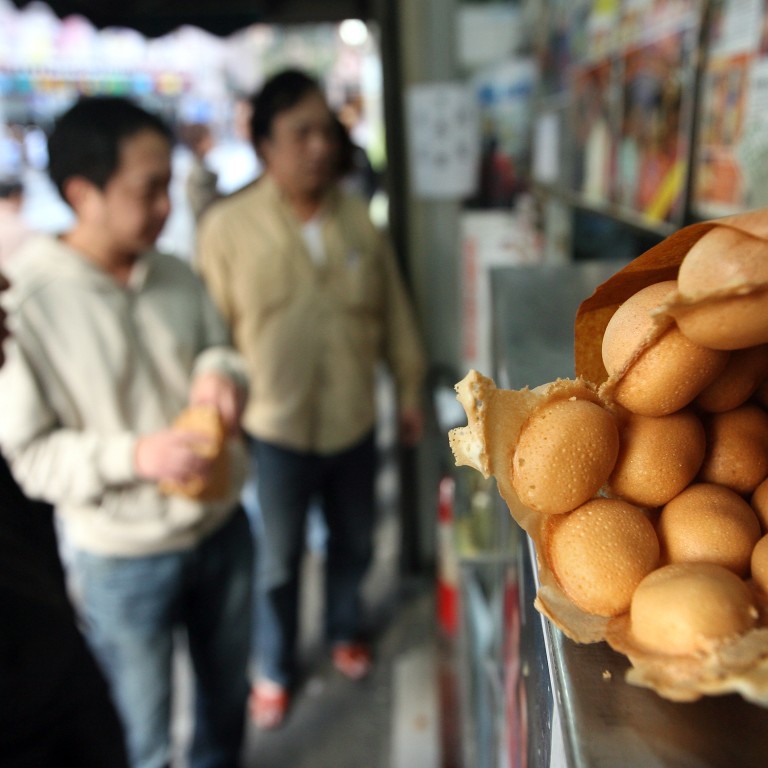
Who Invented the Hong Kong Egg Puff?
They say you can’t make an omelet without breaking a few eggs, but it takes a lot more to perfect the ubiquitous egg puff.
The gai daan jai—or egg waffle, or eggette, depending on whom you ask—is a quintessential Hong Kong street snack, meaning “little chicken egg.” The snack came about in the 1950s, and is said to have been invented by shopkeepers who needed to find something to do with all the cracked or broken eggs which customers refused to buy. Instead of throwing them all away, they mixed these unwanted eggs into a batter with evaporated milk and flour, then poured them into molds—likely first waffle-shaped molds, aping the European waffle, and later into the unique molds you see today. Between the eggy contents and the eggy shape, the name was born.
You need to know that not all egg puffs are created alike. A truly excellent egg puff has a crisp exterior surrounding a pocket of air and then a moist, dense lower half. This shape is achieved by flipping the mold quickly after the batter is poured in, to give a thin, crispy shell on one side and a firm base on the other.

You can buy egg puff molds pretty easily if you want to try your own hand at making them—some are even fully electric waffle makers—but it’s no doubt one of those snacks that tastes better on the streets. The best egg puffs are those cooked in the traditional way over a charcoal flame. The charcoal hits a consistently high temperature and singes the edges, giving the egg puffs a distinctively smoky flavor. They’re getting harder to find these days, although a few shops in Tai O still cook them this way. Order one freshly made and tear it apart when it’s almost too hot to touch: that first perfect crunch, the piping hot air pocket, the soft, rich layer of batter underneath. Happiness, in a brown paper bag.

